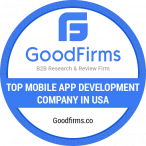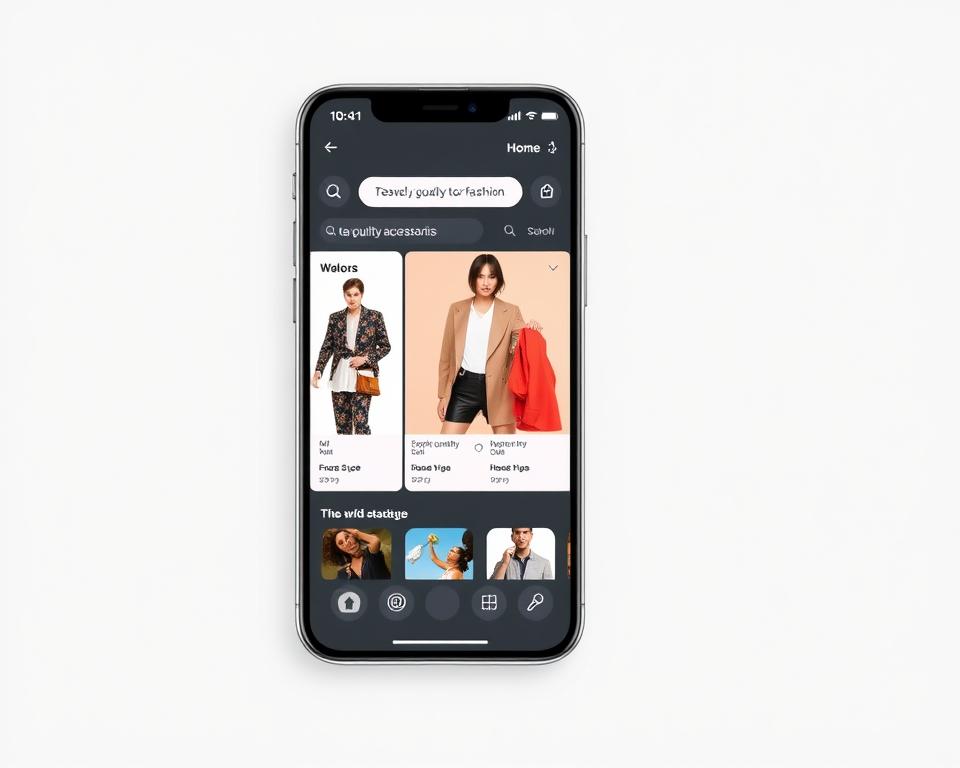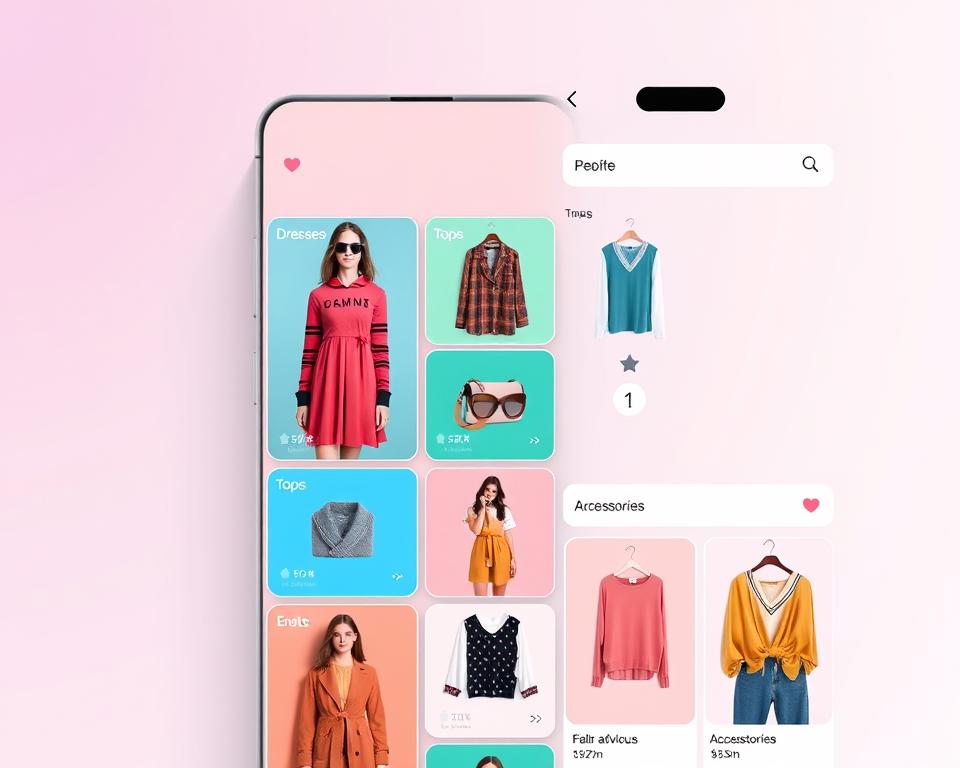The fashion e-commerce world has grown a lot in recent years. Big names like ASOS and Shein lead the market. More and more people want to start their own apps for online shopping. They aim to create apps as good as the big ones by building fashion marketplace apps.
In this guide, we’ll cover the key steps to make a successful fashion app. We’ll focus on what today’s shoppers need. This will help you build an app that meets their demands.
Table of Contents
Key Takeaways
- Understand the current fashion e-commerce market landscape, including key players and consumer behavior trends.
- Identify the essential features and technical requirements for building a robust fashion marketplace app.
- Explore best practices for user interface design and seamless shopping experiences.
- Learn about the importance of product categorization, search functionality, and virtual fitting rooms.
- Discover strategies for effective vendor management, payment integration, and security measures.
- Develop a comprehensive plan for the app development process, including timeline and resource planning.
- Implement effective marketing and user acquisition tactics to drive growth and customer loyalty.
Understanding the Fashion E-commerce Market Landscape
The fashion e-commerce industry has grown a lot in recent years. This growth is thanks to more people shopping online. The global fashion market is expected to hit over $1 trillion by 2025, with a big chunk coming from online sales.
Current Market Size and Growth Projections
The fashion e-commerce market is worth about $700 billion worldwide. The United States, China, and the United Kingdom are the biggest markets. Experts say the sector will grow by 8-10% each year for the next five years. This growth rate is faster than the overall fashion market.
Key Players in Fashion E-commerce
Several big names lead the fashion e-commerce world. These include:
- ASOS, a top online fashion store in the UK and globally
- Shein, known for trendy and affordable clothes
- Zalando, a big name in European fashion e-commerce
- Farfetch, a luxury fashion marketplace connecting shoppers with boutiques and brands worldwide
Consumer Behavior Trends in Online Fashion Shopping
Online fashion shopping has changed how people shop. Key trends include:
- Mobile-first shopping: People love to shop on their phones, making e-commerce sites need to be mobile-friendly.
- Sustainability-conscious consumers: Shoppers want clothes that are good for the planet and fair to workers, leading to a demand for sustainable fashion.
- Personalized shopping experiences: Consumers want sites to offer personalized advice, customization, and a smooth shopping experience across all platforms.
Knowing these trends and what shoppers want is key for fashion e-commerce businesses to keep up and meet customer needs.
Essential Features of Successful Fashion Marketplace Apps
In the fast-paced world of fashion e-commerce, apps need to be easy to use and fun. They must offer personalized product suggestions and be easy to navigate. These features are key to success in the competitive fashion market.
Personalization is a big deal for apps. They use data to suggest products based on what you like and have bought before. This makes shopping more enjoyable and boosts chances of making a purchase.
Social shopping features are also important. Users can share their favorite outfits, follow influencers, and connect with others. This creates a sense of community and encourages users to explore more, leading to more visits and time spent on the app.
Augmented reality (AR) try-on is a big hit in fashion. It lets users try on clothes and accessories virtually. This makes shopping more convenient and can reduce returns, making customers happier.
Easy checkout processes are vital too. Apps that make payment and delivery simple can increase sales and keep customers coming back. This helps businesses grow and build loyal customers.
| Feature | Benefit |
|---|---|
| Personalized Recommendations | Enhance user engagement and drive conversions |
| Social Shopping Elements | Foster a sense of discovery and community |
| AR Try-on Capabilities | Provide a more personalized shopping experience |
| Seamless Checkout Processes | Minimize friction and maximize conversion rates |
By focusing on these key features, fashion apps can offer a great experience. This helps them succeed in the ever-changing world of online fashion shopping.
Technical Requirements and Architecture Planning
Creating a successful fashion app like ASOS or Shein needs careful planning. The backend is key for the app’s smooth operation. It must handle lots of data and work well with other services. Let’s explore the main technical needs and how to plan your app’s architecture.
Backend Infrastructure Requirements
The backend of your fashion app must be strong. It needs to manage lots of product data, user actions, and transactions. Here are some important points:
- Scalable server architecture to handle more users and products
- Fast data storage and retrieval for the product catalog
- Strong security for user access
- Quick order processing and inventory management
- Easy integration with payment and shipping services
Database Design Considerations
The database is the heart of your app. It keeps all product, user, and order data safe. Important database design points include:
- Optimized schema for quick data access
- Scalable data storage solutions for big product catalogs
- Smart data indexing and partitioning
- Smooth connection between the database and app logic
API Integration Framework
Your app needs a strong API framework for easy third-party service integration. This includes:
| Service | Functionality |
|---|---|
| Payment Gateways | Secure transaction processing and payment management |
| Shipping Providers | Real-time tracking, delivery status updates, and logistics integration |
| Analytics Platforms | Comprehensive user behavior analysis and performance monitoring |
| Marketing Tools | Social media integration, influencer marketing, and customer loyalty programs |
By focusing on these technical needs and planning a scalable app architecture, you can create a fashion app that offers a great user experience.
User Interface Design Best Practices for Fashion Apps
Making a user interface (UI) that’s easy to use and looks great is key for a fashion app’s success. By following UI/UX design rules, you can make a mobile app that guides users smoothly through their shopping journey. This leaves a memorable impression.
Here are some top tips for designing a fashion app’s UI:
- Cohesive Color Scheme: Pick colors that match the brand and make users feel something. Use colors that look good together and fit the fashion world’s style.
- Legible Typography: Choose fonts that are clear and match the app’s look. Focus on making it easy to read for a better user experience.
- Intuitive Navigation: Make it easy for users to find what they need. Use common patterns like hamburger menus and bottom bars to help users feel at home.
- Responsive Layout: Make sure the app looks good on all devices. This keeps the experience smooth and enjoyable no matter where users are.
- Engaging Imagery: Use top-notch images to show off fashion items. Great images can inspire and grab users’ attention.
| Design Element | Best Practices |
|---|---|
| Color Scheme | Reflect brand identity, evoke desired emotions, ensure harmony |
| Typography | Prioritize clarity and readability, complement visual style |
| Navigation | Implement intuitive structures, leverage common UI patterns |
| Layout | Ensure responsive design, adapt to various screen sizes |
| Imagery | Utilize high-quality, visually striking product imagery |
By following these UI/UX design tips, fashion apps can make a mobile interface that’s both beautiful and easy to use. This attracts users and helps with successful online shopping.
“A well-designed user interface not only enhances the aesthetic appeal of a fashion app but also plays a crucial role in driving user engagement and conversions.”
Setting Up Product Categorization and Search Functionality
To make a fashion marketplace app successful, you need a strong product categorization and search system. Product categorization helps users find what they want. Search optimization makes it easy for them to do so.
Advanced Search Algorithms
Using advanced search algorithms is key. This includes predictive search and natural language processing. These features make searching easy and fun.
Filtering and Sorting Systems
- Give users many filtering options like size, color, and price.
- Let users sort products by popularity, price, or newest arrivals.
- Make sure these systems work well and change as needed.
Product Tagging Architecture
Use a detailed product tagging architecture to help users find fashion items. Tag products with attributes like materials and styles. This e-commerce taxonomy helps users find what they need.
| Feature | Benefit |
|---|---|
| Predictive Search | Offers suggestions as users type, making searches better. |
| Filtering Options | Helps users find specific items by attribute. |
| Sorting Capabilities | Allows users to organize products their way. |
| Product Tagging | Makes finding products easier by categorizing them. |
With advanced search optimization, strong filtering systems, and detailed product tagging architecture, your app will be a hit. It will offer a great shopping experience and boost sales.
Implementation of Virtual Fitting Rooms and Size Guides
In the world of online shopping, new tech is changing the game. Virtual try-on and size guides are leading the way. They make shopping online better and cut down on returns.
Virtual try-on uses augmented reality (AR) to show how clothes fit. It uses your phone’s camera to show you how clothes look on you. This helps you feel sure about your choices and lowers return rates.
Size guides work with AI to suggest the right size for you. They look at your measurements and what you’ve bought before. This makes shopping easier and happier for everyone.
| Feature | Benefits |
|---|---|
| Virtual Try-on |
|
| Size Recommendation |
|
These new tools make online shopping better. They help keep customers coming back. And they help apps stay ahead in the fast-paced world of e-commerce.
“Virtual try-on and size recommendation are the future of fashion e-commerce, empowering consumers and revolutionizing the way we shop for clothes online.”
Payment Gateway Integration and Security Measures
Adding secure payment gateways is key to a successful fashion app. It makes sure users have a smooth and safe shopping experience. Developers must focus on integrating payment gateways and using strong security.
Popular Payment Solutions
Fashion app users want many payment options. This includes cards, digital wallets, and mobile payments. Some top choices for fashion apps are:
- PayPal
- Stripe
- Amazon Pay
- Apple Pay
- Google Pay
Security Protocols and Compliance
Keeping e-commerce safe and following standards like PCI compliance is vital. Fashion apps need to use strong security measures. These include:
- Secure Socket Layer (SSL) encryption for data
- Two-factor authentication for users
- Fraud detection and prevention
- Regular security checks and updates
Transaction Processing Systems
Good transaction processing is key for smooth payments in fashion apps. Developers should use advanced systems. These systems handle lots of payments, fight fraud, and offer quick reports and checks.
| Payment Gateway | Supported Payment Methods | Security Features | Compliance |
|---|---|---|---|
| PayPal | Credit/Debit Cards, Digital Wallets | SSL Encryption, Fraud Protection | PCI Compliant |
| Stripe | Credit/Debit Cards, Digital Wallets, ACH | SSL Encryption, Fraud Detection | PCI Compliant |
| Amazon Pay | Credit/Debit Cards, Amazon Account | SSL Encryption, Fraud Prevention | PCI Compliant |
Building a Robust Vendor Management System
In the fast-paced world of fashion e-commerce, a solid vendor management system is key. It helps merchants onboard suppliers, manage inventory, and fulfill orders well. This ensures a great customer experience. Here’s how to create a strong vendor management system for your fashion marketplace app.
Streamlining Supplier Onboarding
First, make onboarding suppliers easy and quick. You need to get their business info, check their credentials, and give them secure access. Automating this makes adding new suppliers fast, keeping your product range fresh and exciting for customers.
Synchronizing Inventory Across Vendors
Keeping inventory accurate and up-to-date is vital for a multi-vendor marketplace. Use strong inventory management tools that link with your suppliers. This way, you can update stock levels instantly. It means customers always see the latest info, avoiding disappointment.
Optimizing Order Fulfillment Workflows
Order fulfillment can be tricky in a multi-vendor marketplace. Set up clear supplier onboarding that outlines what you expect for orders. Use automated systems for tracking and delivery to make sure orders are on time and right. This boosts customer happiness.
| Key Features | Benefits |
|---|---|
| Streamlined Supplier Onboarding | Quickly vet and onboard new suppliers, ensuring a steady flow of high-quality products |
| Synchronized Inventory Management | Maintain accurate, real-time inventory visibility and reduce the risk of overselling |
| Optimized Order Fulfillment Workflows | Ensure timely and accurate deliveries, enhancing the overall customer experience |
With a solid vendor management system, fashion marketplace apps can work smoothly with suppliers. This leads to happy customers and business growth.
Development Process for Fashion Marketplace Apps
Creating a successful fashion app like ASOS or Shein needs a detailed plan. This plan covers the app’s lifecycle, tech stack, project management, and timeline. Knowing these stages helps businesses build a strong e-commerce platform that meets today’s consumer needs.
Development Stages Overview
The app development process has key stages. These include:
- Requirement gathering and feasibility analysis
- User experience (UX) design and prototyping
- Backend architecture and database design
- Frontend development and integration
- Testing and quality assurance
- Deployment and maintenance
Technology Stack Selection
Picking the right tech stack is vital for a fashion app’s success. You should think about scalability, performance, security, and compatibility. Popular techs for app development lifecycle include:
- Backend frameworks: Node.js, Ruby on Rails, Laravel
- Database systems: MongoDB, MySQL, PostgreSQL
- Frontend frameworks: React.js, Angular, Vue.js
- Cloud platforms: AWS, Google Cloud, Microsoft Azure
Timeline and Resource Planning
Building a fashion app needs good project management and resource planning. This ensures the app is delivered on time and within budget. The development timeline varies based on the app’s complexity and the team’s size and experience. It usually takes 6 to 12 months.
Having a dedicated team with skills in UI/UX, backend, and quality assurance is crucial. This team is key to a successful project.
“The key to building a successful fashion marketplace app is to have a well-defined development process that balances innovation, user experience, and operational efficiency.”
Analytics and Performance Monitoring Tools
Successful fashion marketplace apps need strong e-commerce analytics and tools to keep improving. They track important performance metrics and user actions. This helps them make their apps better for more sales and happy customers.
It’s key to have a good user behavior tracking system for fashion apps. This lets businesses see how users interact, find problems, and make smart choices to improve the app. Looking at session time, bounce rate, and add-to-cart rate gives insights into how users use the app.
| Key Performance Indicators | Importance |
|---|---|
| Conversion Rate | Shows how well the app turns visitors into buyers. |
| Average Order Value | Tells the average money made from each customer. |
| Customer Retention Rate | Shows how well the app keeps and keeps customers over time. |
| Cart Abandonment Rate | Finds where customers might drop off in the buying process. |
By always watching these performance metrics and user actions, app owners can make smart choices. They can improve their app, make users happier, and grow in a lasting way.
Marketing and User Acquisition Strategies
Apps like ASOS and Shein are experts in app marketing and user acquisition. They use social commerce and influencer partnerships to grow and keep customers coming back.
Social Media Integration
Connecting your app with big social media sites is a big win for user acquisition. It lets you tap into millions of users on Instagram, TikTok, and Facebook. Add features like in-app sharing and promotions to build a strong community around your brand.
Influencer Marketing Platforms
Working with famous fashion and lifestyle influencers is a smart move for app marketing and user acquisition. Use influencer marketing platforms to find and work with influencers who match your brand. Give them special products, discounts, or content to boost your brand’s image.
Customer Loyalty Programs
Keeping your current users happy is as important as getting new ones. Start customer loyalty programs to encourage repeat buys and loyalty. Give rewards, special perks, and personalized experiences to build a loyal group of fashion lovers.
| Marketing Channel | Key Benefits | Successful Examples |
|---|---|---|
| Social Media Integration | Increased reach, engagement, and user-generated content | ASOS, Shein, Zalando |
| Influencer Marketing | Improved brand credibility, targeted audience reach, and sales conversions | Boohoo, Princess Polly, Fashion Nova |
| Customer Loyalty Programs | Enhanced customer retention, repeat purchases, and brand advocacy | H&M, Zara, Macy’s |
Scaling and Maintenance Considerations
As your fashion marketplace app grows, it’s key to focus on scalability and maintenance. You need to make sure your app can handle more users and transactions smoothly. This means improving performance and managing servers well to keep your app running smoothly.
Scaling for App Scalability
Your app needs to grow with your user base. Design it to scale easily by focusing on a modular architecture. This way, you can add more resources as needed without a big hassle.
- Use a microservices-based architecture for easy scaling of different app parts.
- Choose cloud-based infrastructure and serverless computing for automatic scaling.
- Optimize your database and use caching to handle data efficiently.
Performance Optimization Strategies
Keeping your app fast is vital for a good user experience. Here are some ways to boost your app’s performance:
- Make images and media load faster.
- Use content delivery networks (CDNs) to reduce latency.
- Implement caching to cut down on database queries and API calls.
- Always monitor and tweak database queries for better performance.
Effective Server Management
Good server management keeps your app reliable and available. Here are some tips for smooth server operations:
| Strategy | Description |
|---|---|
| Automated Scaling | Use auto-scaling to adjust server resources as needed. |
| Monitoring and Alerting | Set up monitoring and alerts for quick issue resolution. |
| Disaster Recovery | Have a solid disaster recovery plan for business continuity. |
Keeping Up with App Updates
Regular updates keep your app competitive and relevant. Here’s how to manage updates effectively:
- Plan a regular update schedule to add new features and fix bugs.
- Test updates thoroughly to ensure they’re stable and reliable.
- Inform your users about updates to manage their expectations.
- Use app store optimization (ASO) to promote updates.
By focusing on scalability, performance, server management, and updates, your app can grow and succeed in the long run.
Budget Planning and Cost Analysis
Creating a successful fashion marketplace app like ASOS or Shein needs careful app development costs planning. You must understand all financial aspects. This includes initial costs and ongoing expenses to ensure a good ROI and long-term success.
When planning the finances for a fashion marketplace app, consider these important points:
- Initial development costs, including design, programming, and testing
- Ongoing maintenance and hosting expenses
- Marketing and user acquisition strategies
- Payment gateway integration and transaction processing fees
- Vendor management and commission structures
- Customer support and technical troubleshooting
To have a successful e-commerce budget, analyze each cost factor. This helps you plan for the app’s long-term success. It also ensures you can make the most of its growth potential.
“Effective budget planning and cost analysis are the cornerstones of a successful fashion marketplace app development project. Overlooking these critical aspects can lead to financial challenges and jeopardize the long-term viability of your business.”
Conclusion
To make a successful fashion marketplace app, you need to know the fashion e-commerce market well. You also need to focus on making the app user-friendly and always improving it. By adding key features, using new tech, and keeping vendors and security strong, developers can make apps that meet today’s shopper needs.
The digital market for fashion is always changing. Brands and retailers must keep up with new trends and tech. By using the latest in app development, they can stay ahead and grow in the e-commerce world.
The secret to a lasting fashion app is using the latest tech, making it easy to use, and knowing the market well. By focusing on these, developers can make apps that not only serve today’s shoppers but also tomorrow’s.



















